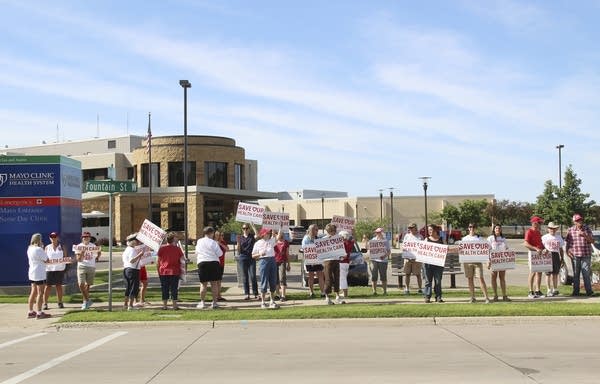Mayo closes two more facilities, blames rural health care crisis

Mayo Clinic on Wednesday announced it will close facilities in Springfield and Lamberton in southwestern Minnesota early next year, continuing a trend of closures and service cuts in rural areas.
Mayo Clinic has closed or consolidated at least 16 facilities in southern Minnesota, Wisconsin and Iowa since 2009, reflecting what Mayo says are mounting demographic and financial pressures facing rural health care.
The latest announcement involves a clinic in Lamberton and a hospital and clinic in Springfield. Mayo officials say the closures, slated for March 2020, will affect 60 people working in these southern Minnesota facilities.
“The reasoning behind this very difficult decision … stems from what is happening in the rural health care crisis that we’re seeing not only in Minnesota, but across the U.S.,” said Dr. James Hebl, regional vice president for Mayo Clinic's health system in the southwestern part of the state. “Mayo Clinic is certainly not immune to the challenges of rural health care.”
Create a More Connected Minnesota
MPR News is your trusted resource for the news you need. With your support, MPR News brings accessible, courageous journalism and authentic conversation to everyone - free of paywalls and barriers. Your gift makes a difference.
Hebl pointed to a combination of complicated factors, which Mayo has cited in other closures and consolidations. For example, he said, Mayo has had a hard time attracting and retaining doctors at these locations.
Meanwhile, there are few people living in the area, which has led to both facilities being underutilized, he said. At the same time, Hebl said there is a relatively high number of health care providers in the region, which has decreased demand for Mayo’s facilities.
Technological advances in medicine that have led to fewer inpatient stays have also been a problem. And when patient volume is low, Hebl said, staff can’t keep up their skills to practice safely.
On top of those pressures, Congress has pulled back on provider payments for those who qualify for Medicare and Medicaid, which can have a deeper impact on rural providers, said Marilyn Serafini, health project director for the Bipartisan Policy Center, a Washington, D.C.-based think tank.
“Together, these factors mean less business for rural hospitals,” she said. “These hospitals are struggling financially. They typically don’t fill their beds, and that’s how they stay in business.”
Serafini said that for rural hospitals to remain viable, financial incentives need to change to fit community needs. For instance, under the current system a hospital might get extra payments for inpatient stays. But with inpatient care on the decline due to technological advancements, that means fewer payments.
She added that these closures come with added risks for patients.
“[It] leaves the community with few, if any, health care options,” she said. “They may have to drive long distances to receive care, or they may have to do without care. Rural areas have larger percentages of older residents than do other areas, so driving long distances is difficult.”
While Mayo is pulling back on services in some areas, it’s expanding in others. It’s growing its Rochester campus and will co-operate a new hospital in Abu Dhabi, all while posting stronger financial results.
Hebl said to take care of both Rochester and rural patients, Mayo has had to adapt to keep the overall financial health of the hospital system stable.
“Mayo Clinic has shifted finances and resources to cover temporary downturns in many areas of the practice, including within the Mayo Clinic health system. But obviously, that can’t be a long-term strategy of constantly shifting resources around,” he said.